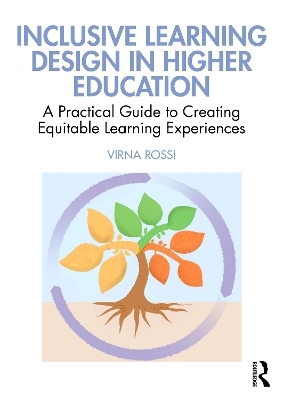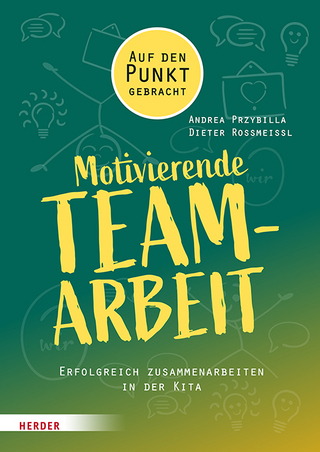
Inclusive Learning Design in Higher Education
Routledge (Verlag)
978-1-032-13618-9 (ISBN)
How can you design more inclusive learning experiences and environments? How can you overcome some of the challenges of designing and implementing more inclusive learning?
You will find the answers to these questions and much more in this dynamic new text. Asserting that good teaching is inclusive teaching, it demonstrates how university modules and courses can be designed so that each student, regardless of their complex diversity, is valued equally.
Drawing from the contributions of over 80 experts and colleagues alongside her own extensive experience, Rossi explores how to embed inclusivity at the point of course design and how to set up, run, assess and evaluate inclusive learning environments and experiences. Following a unique ‘roots to shoots’ journey through an inclusive learning design tree, chapters focus on five dimensions:
Values
Context
Content
Assessment
Evaluation
An accessible and practical guide for higher education course design, this book is a must read for higher education educators looking to be more inclusive in the way they design and offer learning experiences.
For further reading, please visit inclusivelearningdesign.com where you’ll find extended contributor bios, more case studies, key concepts and background, an 'inclusive learning design' checklist and glossary.
Virna Rossi is a teacher educator based in London, UK. A passionate teacher since 1999, she has worked in all educational sectors: Primary, Secondary, College (FE), Adult Education and Higher Education.
About me
Contributors
Preface
Acknowledgements
Structure and organisation of the book
SECTION 1: Learning Values – The roots
Roots to shoots approach
The roots
The ‘I’ root: Intentionally Equitable
The ‘N’ root: Nurturing
The ‘C’ root: Co-created
The ‘L’ root: Liberating
The ‘U’ root: User-friendly
The ‘S’ root: Socially Responsible
The ’I’ root: Integrative
The ’V’ root: Values-based
The ‘E’ root: Ecological
Co-creation
Where are you at now?
SECTION 2: Learning Context - Set up and Engagement
Chapter 1 – Ready? Setting up the physical and digital space
The physical learning spaces
The blended learning spaces
The digital learning spaces
The mobile learning spaces
Chapter 2 – Steady? Needs analysis and orientation
Needs analysis
Orientation
Chapter 3 - Go! Building community and fostering a support culture
Students’ well-being
Starting the course
SECTION 3: Learning Content - Input and practice
Chapter 4 Using Learning Thresholds
Learning outcomes
Threshold concepts
Learning thresholds
Big ideas
Putting it all together
Chapter 5 Flipped and self-directed
Flipped
Self-directed
Chapter 6 Diversified, relevant and creative
Diversified
Relevant
Creative
SECTION 4 - Learning Assessment – Output and feedback
Chapter 7 Choice, voice and authentic
Choice
Voice
Authentic
Chapter 8 Reflective and formative
Reflective and formative assessment
Reflective and formative feedback
Chapter 9 Self and peer assessment and feedback
SECTION 5 – Learning Evaluation
Chapter 10 Lesson evaluation
Chapter 11 Course evaluation
Conclusion
Index
| Erscheinungsdatum | 17.07.2023 |
|---|---|
| Zusatzinfo | 83 Line drawings, color; 9 Halftones, color; 92 Illustrations, color |
| Verlagsort | London |
| Sprache | englisch |
| Maße | 174 x 246 mm |
| Gewicht | 680 g |
| Themenwelt | Sozialwissenschaften ► Pädagogik ► Erwachsenenbildung |
| Sozialwissenschaften ► Pädagogik ► Sonder-, Heil- und Förderpädagogik | |
| ISBN-10 | 1-032-13618-9 / 1032136189 |
| ISBN-13 | 978-1-032-13618-9 / 9781032136189 |
| Zustand | Neuware |
| Informationen gemäß Produktsicherheitsverordnung (GPSR) | |
| Haben Sie eine Frage zum Produkt? |
aus dem Bereich


